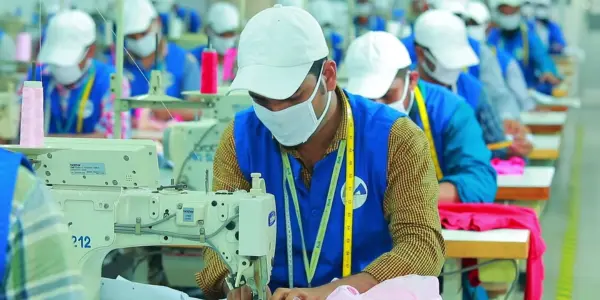Discover the ins and outs of the Garment Buying House Process. Navigate sourcing, quality control, and logistics efficiently.

In the intricate world of fashion, where trends change with the blink of an eye and consumer preferences evolve rapidly, garment buying houses play a pivotal role. They serve as intermediaries between apparel manufacturers and retailers, facilitating a seamless exchange of goods and services.
For anyone looking to delve into the fashion industry or expand their existing business, understanding the garment buying house process is essential. In this comprehensive guide, we’ll explore the intricacies of this process, from its inception to its culmination.
What is a Garment Buying House?
Before delving into the process, let’s first define what a garment buying house is. Essentially, a garment buying house acts as a bridge between apparel manufacturers and retailers. These entities are responsible for sourcing, sampling, production coordination, quality control, and logistics management on behalf of their clients, who are typically retailers or brands.
Understanding the Process (Garment Buying House Process)
Sourcing
The process begins with the identification of reliable manufacturers who can meet the client’s requirements. Garment buying houses employ a variety of methods to source manufacturers, including industry contacts, trade shows, and online databases.
Once potential suppliers are identified, rigorous evaluations are conducted to assess their capabilities, production capacity, quality standards, and ethical practices. Negotiations are then initiated to finalize pricing, payment terms, and other contractual agreements.
Sampling
Once suitable manufacturers are selected, the buying house assists the client in developing product samples based on their specifications. This stage involves close collaboration between the buying house, the client, and the manufacturer to ensure that the samples accurately reflect the desired design, quality, and fit. Multiple iterations of sampling may be required before the final prototype is approved for production.
Order Placement
After the approval of samples, the buying house negotiates the terms of the order with the manufacturer on behalf of the client. This includes finalizing pricing, quantities, production timelines, and other contractual agreements. The buying house serves as a liaison between the client and the manufacturer, ensuring that all parties are aligned and that the order requirements are clearly communicated.
Production Coordination
Once the order is placed, the buying house oversees the production process to ensure that it progresses smoothly and meets the agreed-upon timelines. This involves regular communication with the manufacturer, monitoring production progress, and addressing any issues or delays that may arise. Production coordination also includes managing raw material procurement, production scheduling, and workforce allocation to optimize efficiency and minimize lead times.
Quality Control
Quality control is a critical aspect of the garment buying house process to maintain the reputation of the client’s brand and ensure customer satisfaction. The buying house conducts inspections at various stages of production to assess product quality and identify any defects or deviations from the approved samples.
This includes pre-production inspections to evaluate raw materials, in-line inspections during the manufacturing process, and final random inspections before shipment. Any issues identified during quality control inspections are promptly addressed with the manufacturer to rectify the issues and prevent recurrence.
Logistics Management
Once the production is completed and the goods are ready for shipment, the buying house manages the logistics of transporting the goods from the manufacturer to the client’s destination. This involves coordinating shipping arrangements, customs clearance, and delivery schedules to ensure timely delivery of the merchandise. Logistics management also includes optimizing transportation routes, minimizing transit times, and tracking shipments to provide real-time updates to the client.
Key Benefits of Working with a Garment Buying House
Expertise and Industry Knowledge
Garment buying houses have extensive experience and expertise in the fashion industry, allowing them to navigate complex supply chains and overcome challenges effectively. Their in-depth understanding of market trends, production processes, and regulatory requirements enables them to provide valuable insights and recommendations to their clients.
Cost Efficiency
By leveraging their network of suppliers and negotiating favorable terms, buying houses help clients achieve cost savings without compromising on quality. They have the bargaining power to secure competitive pricing, volume discounts, and favorable payment terms from manufacturers, resulting in overall cost efficiencies for their clients.
Time Efficiency
The buying house streamlines the sourcing and production process, saving clients valuable time and allowing them to focus on other aspects of their business. By handling time-consuming tasks such as supplier identification, sampling, and production coordination, buying houses expedite the process from concept to delivery, reducing lead times and time-to-market for their clients.
Quality Assurance
With stringent quality control measures in place, buying houses ensure that the goods meet the highest standards of quality, reducing the risk of defects or returns. By conducting comprehensive quality inspections throughout the production process, buying houses identify and address any quality issues proactively, ensuring that only products that meet the client’s specifications are delivered.
Risk Mitigation
Buying houses help mitigate risks associated with international trade, such as language barriers, cultural differences, and logistical challenges, by serving as a reliable intermediary between the client and the manufacturer. They act as a buffer against potential risks and uncertainties, providing peace of mind to their clients and allowing them to focus on their core business activities.
Conclusion
In conclusion, the garment buying house process plays a crucial role in the fashion industry ecosystem, facilitating seamless collaboration between manufacturers and retailers. By understanding the intricacies of this process and the key benefits it offers, businesses can leverage the expertise of buying houses to streamline their supply chain operations, achieve cost savings, and maintain high standards of quality.
As the fashion industry continues to evolve, garment buying houses will remain indispensable partners for businesses looking to thrive in a competitive marketplace.
Post Tags:
Garment buying house process in bangladesh, Garment buying house process in bd, Garment buying house process flowchart, Garment buying house process pdf, What is a buying house in garment industry, What is buying house Merchandising, Types of buying house, What is buying house job

You must be logged in to post a comment.